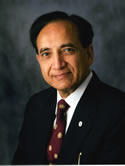Current concepts in management of oral cancer - Surgery Journal Article
| Authors: | Shah, J. P.; Gil, Z. |
| Article Title: | Current concepts in management of oral cancer - Surgery |
| Abstract: | Oral cancer is the sixth most common cancer worldwide, with a high prevalence in South Asia. Tobacco and alcohol consumption remain the most dominant etiologic factors, however HPV has been recently implicated in oral cancer. Surgery is the most well established mode of initial definitive treatment for a majority of oral cancers. The factors that affect choice of treatment are related to the tumor and the patient. Primary site, location, size, proximity to bone, and depth of infiltration are factors which influence a particular surgical approach. Tumors that approach or involve the mandible require specific understanding of the mechanism of bone involvement. This facilitates the employment of mandible sparing approaches such as marginal mandibulectomy and mandibulotomy. Reconstruction of major surgical defects in the oral cavity requires use of a free flap. The radial forearm free flap provides excellent soft tissue and lining for soft tissue defects in the oral cavity. The fibula free flap remains the choice for mandibular reconstruction. Over the course of the past thirty years there has been improvement in the overall survival of patients with oral carcinoma largely due to the improved understanding of the biology of local progression, early identification and treatment of metastatic lymph nodes in the neck, and employment of adjuvant post-operative radiotherapy or chemoradiotherapy. The role of surgery in primary squamous cell carcinomas in other sites in the head and neck has evolved with integration of multidisciplinary treatment approaches employing chemotherapy and radiotherapy either sequentially or concurrently. Thus, larynx preservation with concurrent chemoradiotherapy has become the standard of care for locally advanced carcinomas of the larynx or pharynx requiring total laryngectomy. On the other hand, for early staged tumors of the larynx and pharynx, transoral laser microsurgery has become an effective means of local control of these lesions. Advances in skull base surgery have significantly improved the survivorship of patients with malignant tumors of the paranasal sinuses approaching or involving the skull base. Surgery thus remains the mainstay of management of a majority of neoplasms arising in the head and neck area. Similarly, the role of the surgeon is essential throughout the life history of a patient with a malignant neoplasm in the head and neck area, from initial diagnosis through definitive treatment, post-treatment surveillance, management of complications, rehabilitation of the sequelae of treatment, and finally for palliation of symptoms. © 2008 Elsevier Ltd. All rights reserved. |
| Keywords: | cancer chemotherapy; treatment outcome; bone neoplasms; bone tumor; cancer surgery; reconstructive surgical procedures; overall survival; review; laryngectomy; postoperative period; squamous cell carcinoma; surgical flaps; cancer growth; patient selection; cancer radiotherapy; combined modality therapy; lymph node metastasis; tumor localization; skin neoplasms; tumor volume; smoking; surgical approach; microsurgery; cancer survivor; skin; soft tissue; head and neck cancer; head and neck neoplasms; salivary gland; skull base neoplasms; laser surgery; thyroid gland; alcohol consumption; free tissue graft; larynx; mouth carcinoma; mouth neoplasms; paranasal sinus cancer; mouth cancer; oral surgery; rehabilitation care; soft tissue neoplasms; paranasal sinus; head and neck carcinoma; mouth cavity; bone regeneration; advanced mouth cancer; head and neck cancer surgery; mouth cancer treatment; multi-modality treatment; multidisciplinary treatment oral cancer; oral cancer; oral cancer outcomes; oral cancer surgery; hypopharynx; life history; mandible reconstruction; mandible resection; mandible tumor; mandibulotomy; nasopharynx; oropharynx; pharynx; skull surgery; tooth implantation; antineoplastic protocols |
| Journal Title: | Oral Oncology |
| Volume: | 45 |
| Issue: | 4-5 |
| ISSN: | 1368-8375 |
| Publisher: | Elsevier Inc. |
| Date Published: | 2009-04-01 |
| Start Page: | 394 |
| End Page: | 401 |
| Language: | English |
| DOI: | 10.1016/j.oraloncology.2008.05.017 |
| PUBMED: | 18674952 |
| PROVIDER: | scopus |
| PMCID: | PMC4130348 |
| DOI/URL: | |
| Notes: | --- - "Cited By (since 1996): 16" - "Export Date: 30 November 2010" - "CODEN: EJCCE" - "Source: Scopus" |
Altmetric
Citation Impact
BMJ Impact Analytics
Related MSK Work





